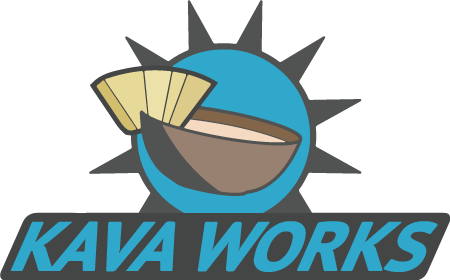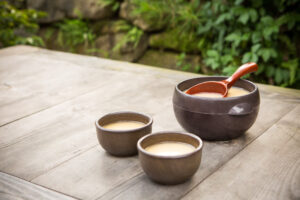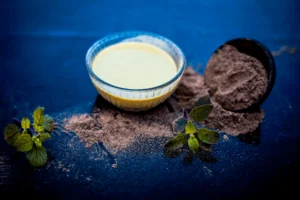Last Friday, I walked into what used to be O’Brien’s Pub downtown. Same brick walls, same wooden tables, but the neon Budweiser sign was gone. In its place hung a carved wooden sign: “KavaScape.” Behind the counter, instead of beer taps, sat coconut shells and strainer bags.
“We still get people ordering Jack and Coke,” the bartender told me, laughing. His name was Marcus, and six months ago he was slinging drinks at a nightclub. “Now I’m explaining why this muddy-looking water will relax them without the hangover.”
What Even Is This Stuff?
First time I tried kava, I thought someone was playing a joke. It looked like dishwater, tasted like dirt, and made my tongue feel like I’d licked a battery. My friend Dave, who’d dragged me to a kava bar, just grinned. “Give it twenty minutes,” he said.

Kava vs Alcohol
Twenty minutes later, I understood. It wasn’t like being drunk—no room spinning, no stupid decisions brewing. Just this… calm. Like someone had turned down the volume on my anxiety without touching my ability to think straight.
Kava comes from a root that Pacific Islanders have been drinking for 3,000 years. They grind it up, mix it with water, strain it, and serve it in ceremonies. Now it’s showing up in strip malls across America, and people are noticing it doesn’t come with alcohol’s baggage.
The Morning After Difference
Here’s what sold me: waking up the next day. After a night at a regular bar, I’m usually negotiating with my headache, apologizing to my stomach, and trying to piece together why I texted my ex. After a night at the kava bar? I woke up at 7 AM and went for a run.
“That’s the thing people can’t believe,” Marcus told me. “They’re so used to ‘relaxation’ meaning ‘tomorrow’s problem’ that they don’t trust it at first.”
My buddy Dave switched to kava after a DUI scare. Not a DUI—just a close call that made him rethink things. “I realized I was spending $200 a weekend to feel terrible on Monday,” he said. “Now I spend $30 on kava and feel better than I did before I went out.”
The Social Scene Shift
Walking into a kava bar on Saturday night feels weird at first. People are laughing, talking, playing board games—but nobody’s stumbling or slurring. The energy’s different. Calmer, but not boring. Just… present.
Sarah, a regular at KavaScape, explained it best: “At regular bars, everyone’s trying to escape something. Here, people are trying to connect without the false confidence.”
She’s got a point. Last week I watched two guys have a deep conversation about their divorces. Try having that chat after six beers—it either ends in tears or a fight. With kava, they just talked, really listened, then played a game of chess.
Why People Are Switching
The stories are all different but weirdly similar. There’s Jessica, who started coming after her doctor warned her about mixing anxiety meds with alcohol. Tom switched when he realized he’d been “taking the edge off” every night for ten years. Amanda just got tired of losing Sundays to hangovers.
“I’m not anti-alcohol,” Amanda told me. “I just realized it wasn’t serving me anymore. Kava gives me the unwind without the self-destruct.”
The health thing matters too. No calories in kava (unless you add coconut milk), no sugar crash, no dehydration. My fitness tracker doesn’t yell at me the morning after a kava session like it does post-cocktails.
But Does It Actually Work?
Look, kava isn’t magic. If you’re expecting the wild buzz of tequila shots, you’ll be disappointed. It’s more like… remember being a kid in summer, that feeling when you had nowhere to be and nothing to worry about? It’s that, in a cup.
The first few times feel subtle. Your shoulders drop. The knot in your chest loosens. Conversations flow easier. But you’re never “messed up.” I’ve never made a decision on kava that embarrassed me the next day.
Some people don’t feel much at all. My brother tried it and said it was like “drinking expensive dirt water.” Fair enough. But for those of us who do feel it, it’s become a game-changer.
The Downsides Nobody Mentions
Let’s be real—kava isn’t perfect. The taste never gets good, just tolerable. Some people get nauseous if they drink too much too fast. And the reverse tolerance thing is weird—you might need to drink it several times before feeling effects.
There’s also the social aspect. Telling coworkers you’re going to a kava bar gets blank stares. Dating someone new? Good luck explaining why you want to take them somewhere that serves brown water in coconut shells.
And quality matters. Bad kava is like bad coffee but worse—it can make you feel sick instead of relaxed. The good bars know their sources, but the sketchy ones? Buyer beware.
Finding Your Spot
Not all kava bars are created equal. KavaScape feels like a coffee shop had a baby with a yoga studio. Mellow music, local art, people actually reading books. Perfect for my vibe.
But Kava Kingdom across town? Totally different. Live music, louder crowd, more of a party atmosphere—just without alcohol. My younger coworkers love it there.
The key is finding what works for you. Some places are basically sober nightclubs. Others feel like meditation centers. Most fall somewhere in between.
Making the Switch (Or Not)
Nobody’s saying you have to give up your wine or beer. Plenty of people do both—kava during the week, drinks on special occasions. It’s not about judgment or joining some movement. It’s about options.
What surprised me was how easy the switch was once I found my groove. Friday happy hour became Friday kava time. Same friends, same unwinding, just different beverage and no Saturday morning regrets.
My girlfriend still drinks wine. We’ll go to a regular bar and she’ll have her Pinot while I have soda water, then we hit the kava bar where I can relax while she switches to tea. It works.
The Bigger Picture
Something’s shifting in how we think about socializing and relaxation. The pandemic made a lot of us realize our “habits” had become dependencies. Kava bars are popping up in every major city, and they’re staying busy.
Marcus thinks it’s generational. “Millennials and Gen Z are more open to alternatives. They watched their parents’ relationship with alcohol and want something different.”
Maybe. Or maybe we’re all just tired of hangovers and bad decisions. Either way, options are good.
Last month, O’Brien’s—now KavaScapet—had their one-year anniversary. The owner told me they’re more profitable now than in their bar days. “Less liability, less drama, and honestly, I sleep better at night knowing nobody’s leaving here and making dangerous choices.”
I finished my shell (that’s what they call a cup of kava), played a round of backgammon with a stranger who became a friend, and drove home completely clear-headed at 11 PM. Ten years ago, that would’ve seemed like a boring Friday night. Now? It feels like freedom.
The sign outside KavaScape says “Unwind Differently.” After a year of Friday nights there, I finally get it. It’s not about being anti-alcohol or pro-kava. It’s about choosing what actually serves you instead of what’s just always been there.




